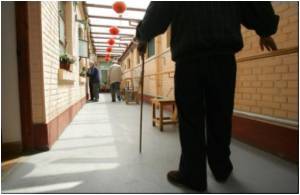
The apparatus also integrates a ‘force pad’, or force plates, on the ground where the participants walk in the safety harness, to measure the force of each step.
The “Solo Step” harness was manufactured in the United States and recently assembled with the help of local firm CASA Engineering.
Rose Newman, exercise physiologist and Clinical Educator in the ISES, said the apparatus would aid in balance and mobility research.
“Currently, the fourth year exercise physiology students and I conduct falls prevention sessions at the ISES clinic with older female adults in the community,” Ms Newman said.
“The sessions are enjoyable and assist the ladies with their strength, flexibility, balance and co-ordination and are aimed at reducing the risk of falls.
Advertisement
Ms Newman said a research project involving adults aged between 60 and 80 would start in March, and volunteers from the community were being sought.
Advertisement
“The ability of older adults to multi-task decreases as they age. Doing several things at once, for example, walking, talking and carrying groceries, can make them more prone to falls.
“The support harness would be used at the beginning of the program to test their abilities and then again after the nine-week training program,” Ms Newman said.
Participants will also wear sensors on their body and cameras are positioned around the equipment area to capture to every movement of the participant’s limbs and joints while walking.
“The set-up will measure the way older adults walk while being distracted with a cognitive task and physical task, for example asking them the answers to simple sums and carrying an item in their hands,” she said.
“With this new equipment, our research has the advantage in that we can gain a more complete picture of exactly how walking patterns vary, which is associated with falling, when distracted with other tasks such as avoiding traffic whilst crossing the street. We’re attempting to simulate ‘real life’, so to speak.
“Also, with the harness, there is no risk whatsoever of the participants injuring themselves.
“In essence, the research aims to improve the participants ability to perform everyday activities, thereby reducing the risk of falling and improving quality of life.”
The project will also involve fourth year clinical exercise physiology students, to help them gain a better understanding of balance and mobility and then, as professionals, apply this knowledge in the community.
Ms Newman said falls cost the community millions of dollars every year, with falls being the leading cause of injury-related visits to emergency departments.
Source-Medindia






